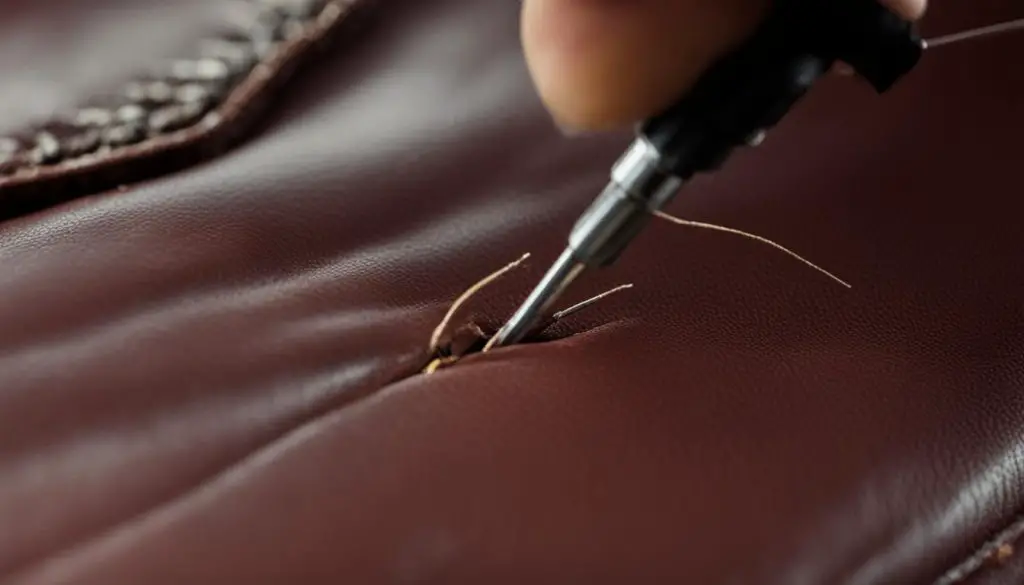Leather couches are a beautiful addition to any living room, known for their luxurious feel and timeless appeal. However, over time, tears and damage can occur, compromising the appearance and functionality of your cherished piece of furniture. But don’t worry – with a few simple steps, you can easily repair the tear on your leather couch and restore it to its former glory.
In this article, we will guide you through the process of fixing a tear on your leather couch, from preparing the area to applying the necessary products for a seamless repair. Whether you have a small tear or a larger one that requires patching, our step-by-step instructions will help you tackle the repair with confidence.
You can also read our article on How to Fix a Peeling Leather Couch: 3 Effective Solutions for Restoring Your Furniture
Key Takeaways:
- Cleaning the damaged area and trimming loose edges are essential steps before starting the repair.
- Choose a leather filler and apply it to the tear, allowing it to dry before sanding the area for a smooth finish.
- Consider using a leather dye to blend the repaired area with the rest of the couch for a seamless appearance.
- Seal and condition the repaired area to protect it from future damage and maintain its suppleness.
- Patching larger tears requires measuring and cutting a patch from matching leather and securing it with leather glue.
Preparing the Couch for Repair
Before you begin the repair process, it’s important to clean the damaged area and trim any loose edges. Follow these steps to ensure a successful repair:
- Start by cleaning the area using a soft cloth and a leather cleaner. Gently wipe away any dirt or debris, making sure to focus on the damaged section.
- Next, use sharp scissors to trim any loose edges around the tear. This will create a clean and smooth surface for the repair.
Applying Leather Filler and Dye
After cleaning and trimming, it’s time to address the tear on your leather couch. Applying leather filler and dye is an essential step in the repair process. Here’s a guide on how to effectively repair the tear:
- Choose the Right Leather Filler: Select a high-quality leather filler that matches the color of your couch. This will ensure a seamless repair.
- Prepare the Area: Using a spatula, apply the leather filler to the tear. Make sure to fill the entire damaged area, pressing the filler firmly to create a smooth surface.
- Allow the Filler to Dry: Let the filler dry completely according to the manufacturer’s instructions. This will typically take a few hours.
- Sand the Repaired Area: Once the filler is fully dry, gently sand the repaired area using fine-grit sandpaper. This will help create an even surface and blend the repaired area with the surrounding leather.
- Use Leather Dye for Color Match: If necessary, you can use a leather dye that closely matches the color of your couch. Apply the dye to the repaired area, following the instructions provided with the product. This will help ensure a seamless blend between the repaired section and the rest of the leather couch.
Remember to take your time during the process and follow the instructions carefully to achieve a professional-looking repair.

Sealing and Conditioning the Leather
To complete the repair process and ensure the longevity of your leather couch, it is crucial to apply a leather sealer and conditioner. These products not only protect the repaired area from future damage but also help maintain the suppleness and overall quality of the leather.
Step 1: Apply a Leather Sealer
Once the tear has been repaired, carefully apply a leather sealer to the repaired area. The sealer forms a protective barrier against spills, stains, and other potential sources of damage. It creates an invisible shield that guards the repaired spot, allowing your leather couch to withstand everyday use.
Step 2: Use a Leather Conditioner
In addition to the leather sealer, it is important to regularly condition your leather couch to maintain its supple and luxurious feel. A quality leather conditioner replenishes the natural oils in the leather, preventing it from drying out and cracking. Conditioning your couch every three to 6 months is recommended.
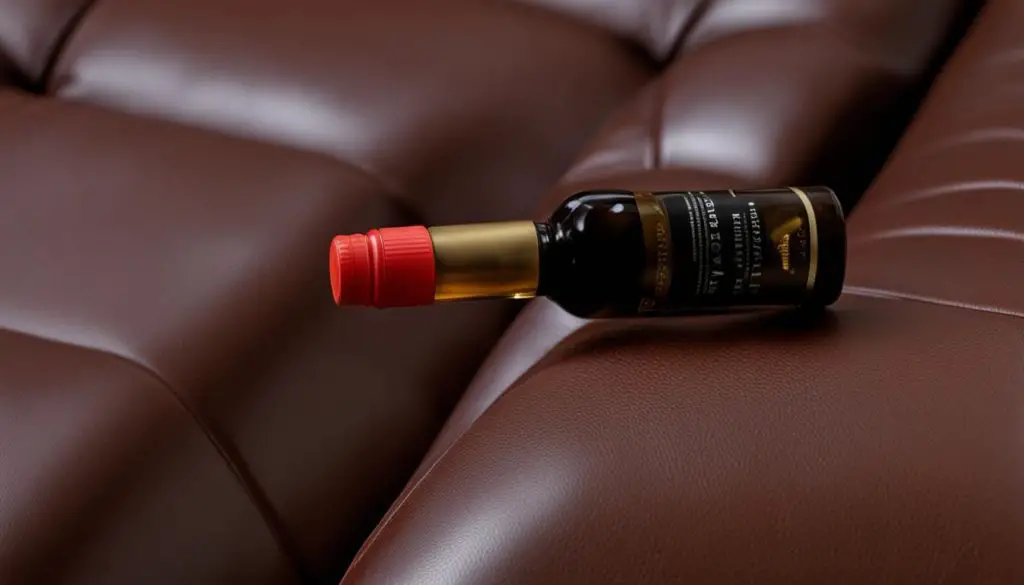
| Benefits of Using a Leather Sealer and Conditioner |
|---|
| 1. Protects the repaired area from future damage |
| 2. Maintains the suppleness and flexibility of the leather |
| 3. Prevents cracks, dryness, and fading |
| 4. Extends the lifespan of your leather couch |
Patching Larger Tears
When dealing with larger tears on your leather couch, a patching technique is necessary to achieve a seamless repair. Here’s a step-by-step guide on how to patch larger tears:
1. Measure and Cut a Patch
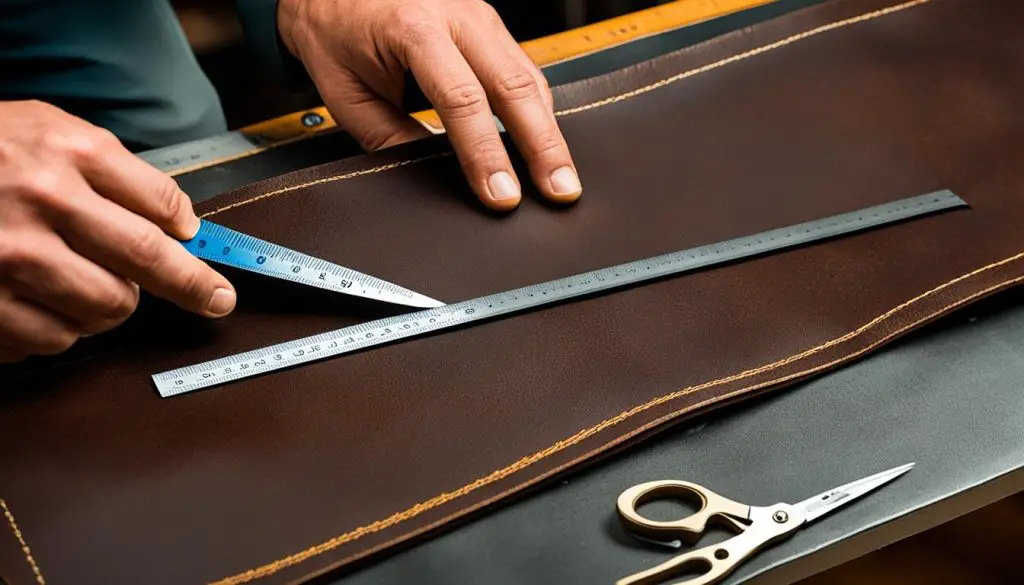
To begin, carefully measure and cut a patch from a piece of matching leather. Ensure that the patch is slightly larger than the damaged area, allowing for proper coverage and stability.
2. Insert the Patch
Using a pair of tweezers, gently insert the patch behind the tear, making sure it lies flat against the backside of the leather. Take your time to position the patch accurately, ensuring it covers the entire damaged area.
3. Apply Leather Glue
Apply a small amount of leather glue to the edges of the tear. This will help secure the patch in place and prevent any further tearing. Press the edges firmly onto the patch, creating a strong bond.
4. Smooth and Even Surface
To achieve a smooth and even surface, use leather filler and sandpaper. Apply the leather filler over the repaired area and carefully smooth it out, blending it with the surrounding leather. Once dried, gently sand the surface with fine-grit sandpaper until it is level and seamless.
Preventive Measures for Maintaining Your Leather Couch
To keep your leather couch in good condition for years to come, it’s important to take preventive measures. By following these simple tips below, you can ensure that your couch remains durable, vibrant, and comfortable.
Avoid Direct Sunlight and Heat Sources
Direct sunlight can have damaging effects on your leather couch. Prolonged exposure to the sun’s rays can lead to fading and drying of the leather, causing it to lose its natural luster and suppleness. To prevent this, position your couch away from windows or use curtains or blinds to block the sunlight. Additionally, keep your leather couch away from heat sources such as radiators or fireplaces, as the heat can have a similar drying effect on the leather.
Regularly Condition Your Leather Couch
Conditioning your leather couch is essential for maintaining its appearance and preventing cracks or dryness. Choose a high-quality leather conditioner and apply it to your couch regularly. Conditioning helps to keep the leather moisturized and supple, protecting it from wear and tear and extending its lifespan.
Minimize Wear and Tear
Areas of your leather couch that experience heavy use, such as armrests and headrests, are more prone to wear and tear. To minimize this damage, consider using throws pillows, or blankets in these areas. Not only will it protect the leather from stains and scratches, but it also offers an opportunity to add a decorative touch to your living space.
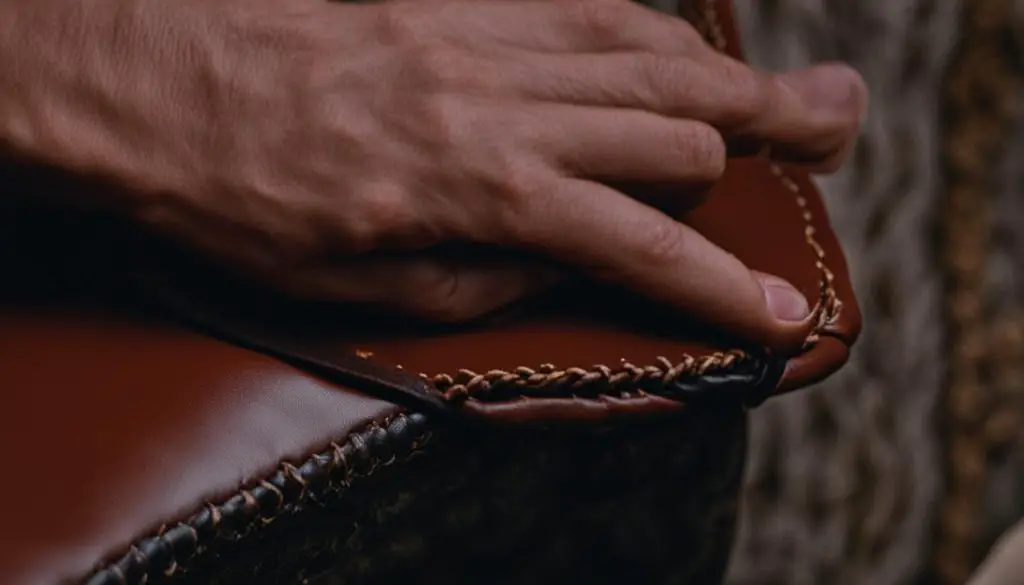
By implementing these preventive measures, you can ensure that your leather couch remains in optimal condition and retains its beauty for years to come. Taking care of your couch now will save you from potential repairs and replacements in the future.
Professional Help for Complex Repairs
While DIY leather sofa repair can be effective for minor damages, more complex issues may require professional help. If you are dealing with significant tears or if you want to ensure the best results, it’s recommended to contact a professional leather furniture repair specialist. They have the expertise and experience to handle complex repairs and provide the necessary care to restore your couch.
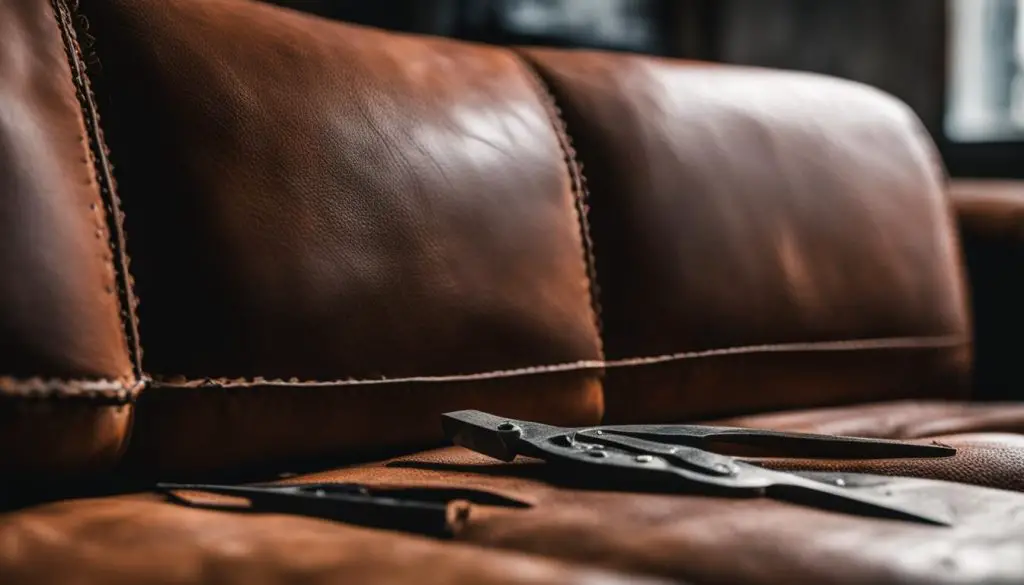
Repairing a leather sofa can be a challenging task, especially when faced with extensive tears or damage. In such cases, seeking professional help is crucial to ensure a successful and long-lasting repair.
A professional leather furniture repair specialist understands the intricacies of leather repair and has the skills to address complex issues. They have access to high-quality tools, materials, and expertise to restore your couch to its original condition.
When you hire a professional, they will thoroughly assess the damage to determine the most appropriate repair technique. Whether it’s patching larger tears, applying specialized fillers and dyes, or utilizing advanced repair methods, they have the knowledge and resources to deliver exceptional results.
Additionally, a professional leather furniture repair specialist can offer valuable advice on preventive measures and maintenance to ensure the longevity of your leather couch. They can recommend specific products and techniques to protect your couch from future wear and tear.
If you’re uncertain about your ability to repair your leather sofa or want to achieve the best results, don’t hesitate to contact a professional leather furniture repair specialist. They will provide the professional touch needed to restore your couch and extend its lifespan.
Conclusion
Repairing a tear on your leather couch is a manageable task that can be accomplished with the right tools and techniques. Remember to take preventive measures to maintain the condition of your leather couch and consider seeking professional help for complex repairs.
FAQ
What products do I need to repair a tear on my leather couch?
To repair a tear on your leather couch, you will need a soft cloth and leather cleaner for cleaning the damaged area. Additionally, sharp scissors are handy for trimming loose edges. For the repair itself, you’ll need a leather filler, spatula, fine-grit sandpaper, and leather dye that matches your couch’s color. To finish the repair, you’ll need a leather sealer and leather conditioner for protection and maintenance.
Can I fix larger tears on my leather couch?
Yes, for larger tears, a patching technique can be used. Measure and cut a patch from matching leather that is slightly larger than the damaged area. Insert the patch behind the tear using tweezers, making sure it lies flat and covers the entire damaged area. Apply leather glue to the edges of the tear and firmly press them onto the patch. Smooth the surface with leather filler and sandpaper for an even finish.
Should I seek professional help for leather couch repairs?
While DIY leather sofa repair can be effective for minor damages, more complex issues may require professional help. If you are dealing with significant tears or if you want to ensure the best results, it’s recommended to contact a professional leather furniture repair specialist.
How long will the repaired area of my leather couch last?
The longevity of the repaired area on your leather couch depends on various factors, such as the quality of the repair and how well you maintain your couch.

